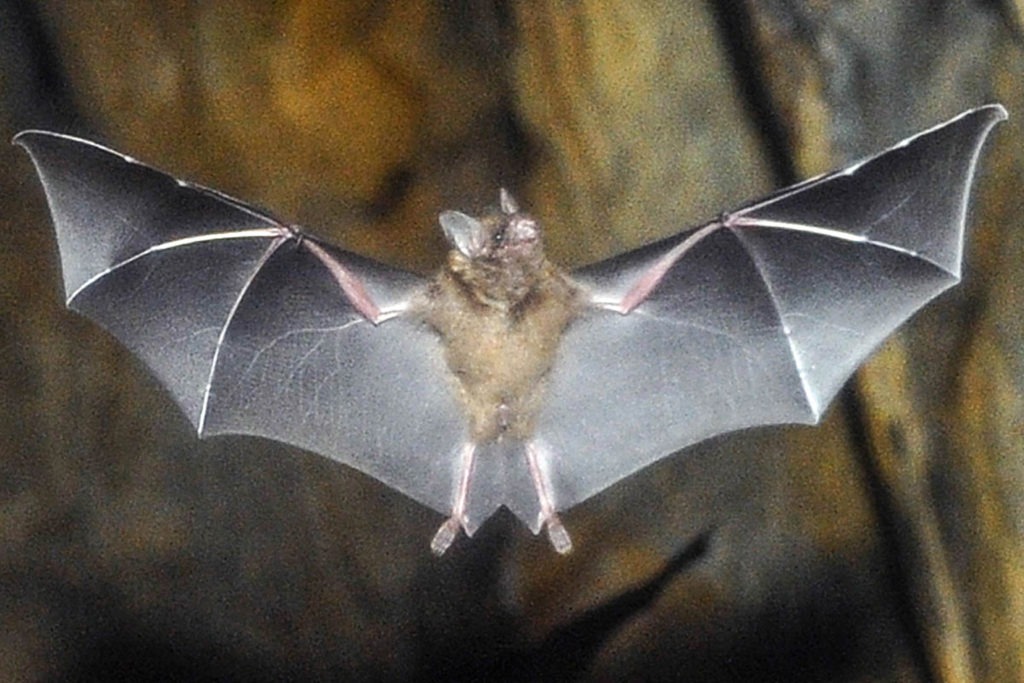Overview
“Where I live”
Seba’s short-tailed bats live in moist evergreen and dry deciduous lowland forests of Central and South America.
At the Maryland Zoo in Baltimore, visitors can see Seba’s short-tailed bats in the Maryland Wilderness Cave. They are not native to Maryland, but are similar in size and behavior to some Maryland bat species, and as fruit eaters can be well managed and cared for in a zoo setting.
“How I live there”
There are more than 1,200 species of bat in the world. Of these, about 70% are insectivores (insect and bug eaters) and 30% are frugivores (fruit eaters). All of the bat species seen in Maryland are insectivores. Seba’s short-tailed bats are frugivores.
Weighing barely more than half an ounce, Seba’s short-tailed bats are small, gregarious, social leaf-nosed bats. During the day, they roost together in colonies of 10 to 100. They usually choose caves or hollow trees. They congregate in two types of roosting group: harems, made up of one male and many females, and bachelor groups, made up of adult and sub-adult males not attached to harems. About 20% of adult males defend harems while the other 80% are in bachelor groups.
Seba’s short-tailed bats communicate through a wide range of vocalizations. Males and females warble to greet each other. Harem males emit loud screeches to warn off other males and control their females.
Seba’s short-tailed bats are most active just after sunset. They feed on more than 50 types of fruit, much of which grows on low-lying shrubs. They supplement their diet with pollen and insects. They rely on an excellent sense of smell to locate food and usually travel within a mile of their roost to find it (although some have reportedly traveled up to three miles away.)
“Making my mark”
Given the amount and variety of fruit that Seba’s short-tailed bats eat, they play an important ecological role as pollinators and seed dispersers. A single Seba’s short-tailed bat ingests hundreds to thousands of fruit seeds each night. The impact of a colony of these bats dispersing all these seeds is extremely significant, even if only a fraction of the seeds actually take root.
Raising Young
Seba’s short-tailed bats have two breeding seasons annually: one that coincides with peak fruit production (June through August) and one at the end of the dry season when flowers come into bloom (February through May). Females give birth to single offspring and usually have two offspring per year. The gestation period is 115 to 120 days. At birth, each baby bat is tiny, weighing only about 0.175 ounces.
“What eats me”
Seba’s short-tailed bats are vulnerable to predation by snakes, raptors, and nocturnal arboreal mammals.
Conservation
Seba’s short-tailed bats are common throughout their geographic range but still face the same threats as other bats around the world, including hunting, habitat destruction, pesticide poisoning, and persecution by humans. Protection of roosting sites and education programs to allay misguided fear of bats are important measures for the conservation of all bat species, including this one.
Ten species of bat live in Maryland either year-round or for part of the year as they migrate through. All eat night-flying insects and other bugs, many of which harm or bother humans. If you see bats silhouetted against the sky at dusk or discover bats roosting near your home, be glad. They are helpful animals to have around and will keep mosquitoes under control naturally!
Taxonomy
- Kingdom: Animalia
- Phylum: Chordata
- Subphylum: Vertebrata
- Class: Mammalia
- Order: Chiroptera
- Family: Phyllostomidae
- Genera: Carollia
- Species: perspicillata


